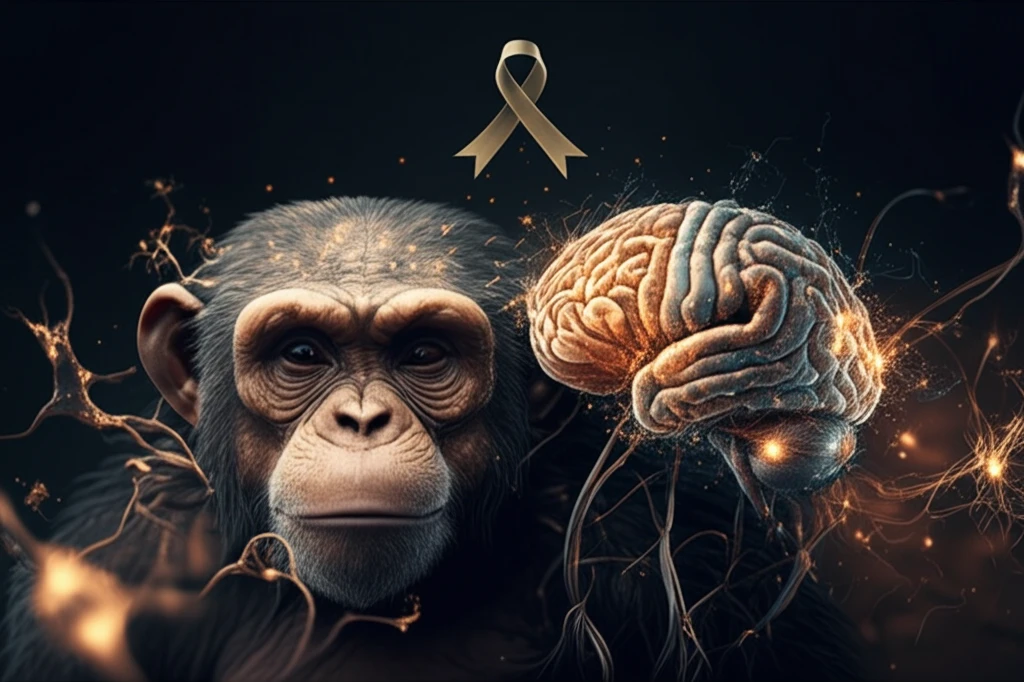
Cracking the Aging Code: What Chimpanzee Brains Reveal About Alzheimer's
"New research explores how astrocytes in chimpanzee brains respond to aging and Alzheimer's-like pathology, offering surprising clues for human treatments"
Alzheimer's disease (AD) remains one of the most formidable challenges in modern medicine. As the global population ages, the prevalence of AD continues to rise, placing immense strain on healthcare systems and affecting millions of lives. While extensive research has been dedicated to understanding the mechanisms of AD, effective treatments and preventative strategies remain elusive.
Astrocytes, the most abundant glial cells in the brain, play a crucial role in maintaining the central nervous system's (CNS) health. These cells are involved in everything from ion and water balance to neurotransmitter regulation and synaptic modulation. However, in the context of AD, astrocytes can become reactive, leading to a state known as astrogliosis, marked by increased expression of glial fibrillary acidic protein (GFAP) and cellular hypertrophy. Understanding how astrocytes behave in aging and AD is critical for developing targeted therapies.
To shed light on these complex processes, a recent study investigated astrocytic changes in aging chimpanzees, our closest living relatives. Chimpanzees, like humans, can develop AD-type pathology, including amyloid plaques and neurofibrillary tangles, making them a valuable model for studying the disease. By comparing astrocytic changes in chimpanzees and humans, researchers hope to uncover unique insights that could lead to new therapeutic strategies for AD.
Astrocytes in Aging Chimpanzees: A Unique Perspective

The study, conducted by Munger et al. (2019), examined the brains of 27 chimpanzees, ranging in age from 12 to 62 years. The researchers focused on specific brain regions, including the hippocampus (HC), mid-temporal gyrus (MTG), and prefrontal cortex (PFC), which are known to be affected by AD in humans. Using stereologic methods, they quantified GFAP-immunoreactive astrocyte density and soma volume in different cortical layers and hippocampal fields.
- GFAP expression does not increase with age in chimpanzees.
- Chimpanzee layer I astrocytes in the PFC are susceptible to AD-like changes, similar to humans.
- Astrogliosis in chimpanzees is primarily restricted to layer I of the PFC.
- Astrogliosis in the CA1 and CA3 subfields was associated with neuritic cluster density and amyloid plaque volume.
Implications for Human Alzheimer's Treatment
These findings have significant implications for our understanding of AD in humans. By identifying the unique characteristics of astrocytic responses in chimpanzees, researchers can gain valuable insights into the complex interplay between aging, AD-type pathology, and astrocyte activation. This knowledge could pave the way for the development of targeted therapies that modulate astrocytic behavior to mitigate the progression of AD. Further research is needed to fully elucidate the mechanisms underlying these differences and to determine how they can be harnessed to improve human brain health.
